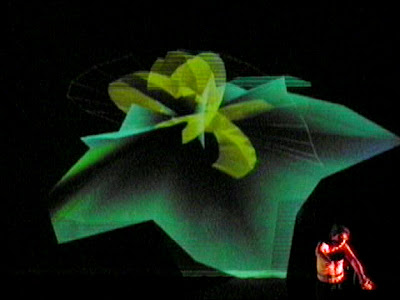

My chapter contribution to this book introduces various approaches to incorporating electronic music into choral experiences.


|
"Composing in Choir" edited by Jody Kerchner and Katherine Strand, published by GIA Music (Spring 2016)
"Choral musicians and conductors can use simple technology to creatively augment performances of standard repertoire. This is easy to do because most current handheld devices are capable of recording, editing, and playing quality audio. It is possible to play pre-recorded audio before a choral piece, after the piece, or even during the performance. For creative musicians and conductors, there is a universe of imaginative ideas that can supplement traditional choral performance. By composing a sonic environment based on the theme or narrative of the musical text, audiences may appreciate a richer listening experience." — Tom Lopez |
This article was published in The International Journal of Screendance.
 |
The International Journal of Screendance (Spring 2012, Vol. 2)
"Once there was a time when the bringing-forth of the true into the beautiful was called techne. And the poiesis of the fine arts also was called techne." — Martin Heidegger (trans. by William Lovitt) In this thought experiment, Techne and Poiesis will be twins. I will set them on their separate ways and we will see if they reunite. |

I created a 30-minute audio class for CounterStream Radio.

|
"Crash Course: the building blocks of acousmatic music" by Tom Lopez, distributed by NewMusicBox (November 6, 2008)
What is acousmatic music? Paradoxically, it might sound familiar and otherworldly at the same time. I invite you to visit the universe of acousmatic music and learn some of the processes and techniques of this compelling and mysterious creative practice. |
"Interfacing Virtual and Physical Spaces through the Body: the cyberPRINT Project," co-authored by Tom Lopez, was published in the International Journal of Design Computing (2003, Vol. 6) and presented at (ACADIA) the Association for Computer Aided Design in Architecture (2002).
 Currents & Streams was created with CyberPRINT technology.
Currents & Streams was created with CyberPRINT technology.
|
The cyberPRINT is a fully immersive, interactive virtual environment that is generated in real-time based on physiological data readings of a human body. The cyberPRINT is also an event, wherein a performer is connected to the cyberPRINT generator to create a self-sustaining feedback mechanism. Although using the body to electronically drive music and media events is not new, the cyberPRINT carefully addresses interactive 3D virtual environments. The cyberPRINT is technologically advanced and interdisciplinary intensive, involving architecture, choreography, modern dance, music, bioengineering, medicine and computer science. This project covers a wide and fertile territory that goes from the very technical and design oriented to the very theoretical and interdisciplinary. |
My chapter contribution to this book introduces a thorough approach to teaching computer musicianship.
 |
"The Walden School Musicianship Course: A Manual for Teachers" edited by Paul Nauert, published by The Walden School (2002)
The Walden School Musicianship Course is an organic approach to the study of music in which students are led to discover new materials and concepts for themselves. Following discovery, they are given thorough aural, keyboard, and written drill work in each area of study. Finally they are encouraged to apply the materials to an improvisation or a composition. This Manual for Teachers provides a comprehensive curriculum for all levels of The Walden School Musicianship Course. "The chapter on Computer Musicianship, by Tom Lopez, is one of the clearest teaching texts I know of."" - Randall Davidson (Sounding Board) |
This book includes my composition, Espaces Pointillés, in the section about contemporary styles of music. There is a page of the score, an audio excerpt, and accompanying discussion about interactive electronic music.
 |
"Theory Essentials" by Connie Mayfield, published by Cengage Learning (2003, 2nd edition 2013)
"Theory Essentials" offers a unique, total solution to teaching music theory. Integrating all the components of the two-year music theory sequence, the text and its accompanying workbook synthesize the major topics in music theory with aural skills, keyboard applications, and examples from the literature. Offering terrific value, "Theory Essentials" replaces the need for the four separate texts traditionally required for the music theory sequence (theory, ear training/sight singing, keyboard harmony, and an anthology). The result is a remarkable, carefully-paced synthesis of these components that moves from a solid grounding in Fundamentals, Diatonic Harmony, Secondary Function chords, and Twentieth-Century Techniques. |
 |
I have hosted a radio show since 1999 on WOBC-FM in Oberlin, Ohio. Foldover has focused on electro-acoustic music exclusively, with more than 350 shows, dozens of live interviews, and more than 4,000 compositions. |